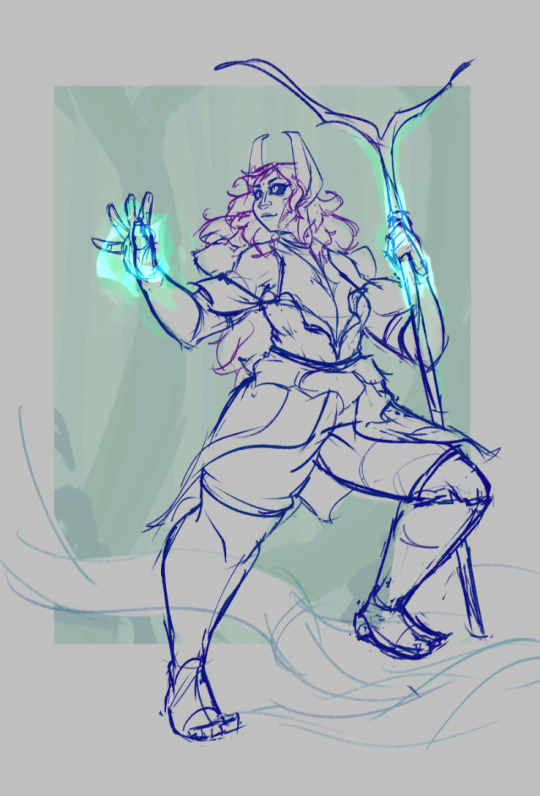#wode elf
Explore tagged Tumblr posts
Text
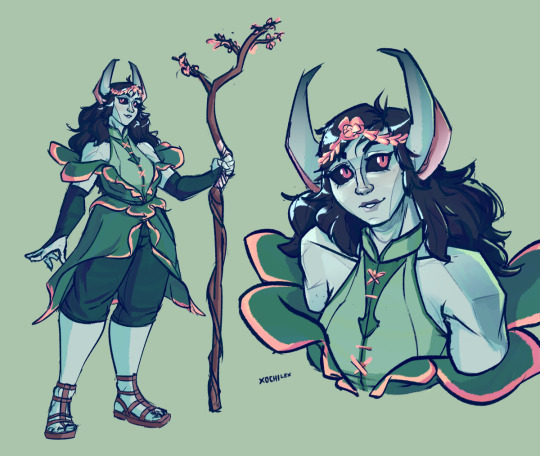
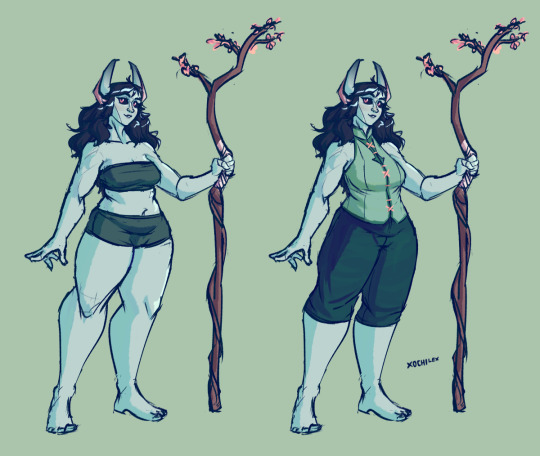
Settled on a look for this wode elf elementalist
#draw steel#mcdm#mcdm rpg#elf#wode elf#wood elf#ttrpg#ttrpg art#ttrpg character#elementalist#druid#wizard#oc#xochiart
216 notes
·
View notes
Text


Been doing these sketchy half body pictures for my friends and as trades!
These are both for my buddies tho. 💚✨
Gethin belongs to @zombie-rose
Denizen belongs to @kylieminogueofficial
#jacqjohnsonart#my art#art#illustration#digital art#drawing#sketch#original character#draw steel ttrpg#draw steel#mcdm#fanart#wode elf#shadow elf
23 notes
·
View notes
Text

Started a Draw Steel two-shot and redesigned my fantasy husbands for it! They're Dorian, a human troubadour and Gwyn, a wode elf (npc). Gotta say I love this game <3
3 notes
·
View notes
Text

My coworker is going to be running the MCDM RPG playtest later this week for a bunch of us, and I'm super hyped to try it out. So meet Gheldyr, the wode elf shadow I'll be playing as.
There isn't a tonne of info about the setting floating around yet, but I found a bit of art of the wode elves and they just look so damn cool that I had to draw mine.
4 notes
·
View notes
Text
Classes & Level Limits
I was never a big fan of this concept. As early as my beloved Wizardry II, I inherently understood that anyone of any ancestry should be able to play as any class, just that some would be less optimized than others. When I first got to read some pirated AD&D 2e material around 2001, I was shocked to discover so many ancestries simply couldn't be some classes. As someone who managed to roll up a Gnome Samurai in Wizardry II (Gnomes got exceptionally good starting intelligence and extra stat points), I was astonished that this would basically be impossible in AD&D.
So, what if we took the idea of an ancestry's class and level limits, and simply…bumped that up a tier? Ancestries can now be any class. Those with existing level limits are now limitless, while those formerly unavailable now have level limits.
Then I did the work.
Dragonborn: Unlimited Level: Assassin, Cleric, Fighter, Illusionist, Magic User, Paladin, Thief Limited to Level 8: Acrobat, Barbarian, Bard, Druid, Ranger
Dwarf: Unlimited Level: Assassin, Cleric, Fighter, Thief Limited to Level 8: Acrobat, Barbarian, Bard, Druid, Illusionist, Magic User, Paladin, Ranger
High Elf: Unlimited Level: Acrobat, Assassin, Cleric, Druid, Fighter, Magic User, Ranger, Thief Limited to Level 8: Barbarian, Bard, Illusionist, paladin
Wode Elf: Unlimited Level: Acrobat, Assassin, Druid, Fighter, Magic User, Ranger, Thief Limited to Level 8: Barbarian, Bard, Cleric, Illusionist, Paladin
Gnome: Unlimited Level: Assassin, Cleric, Fighter, Illusionist, Thief Limited to Level 8: Acrobat, Barbarian, Bard, Druid, Magic User, Paladin, Ranger
Halfling: Unlimited Level: Druid, Fighter, Thief Limited to Level 8: Acrobat, Assassin, Barbarian, Bard, Cleric, Illusionist, Magic User, Paladin, Ranger
Orc: Unlimited Level: Acrobat, Assassin, Barbarian, Cleric, Fighter, Thief Limited to Level 8: Bard, Druid, Illusionist, Magic User, Paladin, Ranger
Tiefling: Unlimited Level: Acrobat, Assassin, Bard, Fighter, Illusionist, Magic User, Ranger Limited to Level 8: Barbarian, Cleric, Druid, Paladin, Thief
0 notes
Photo
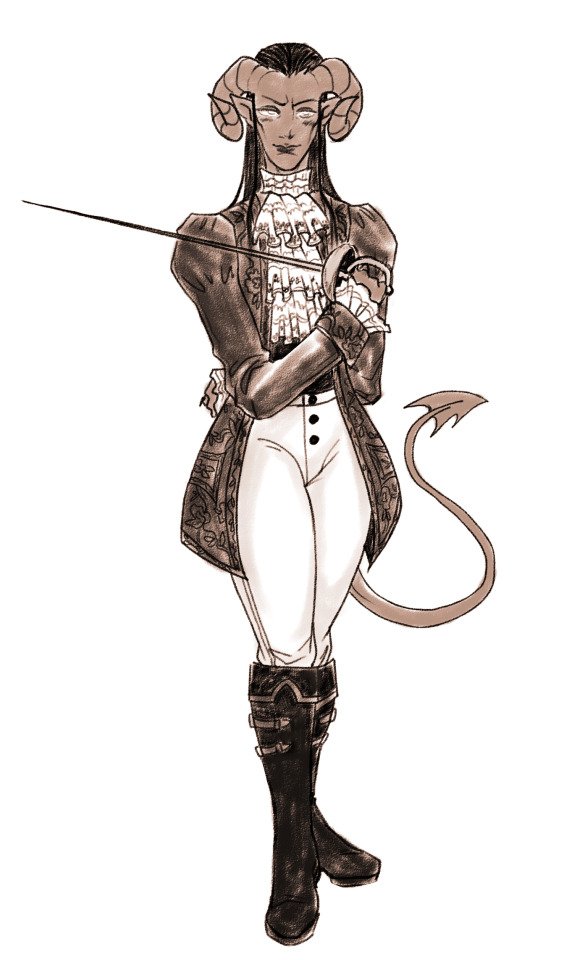
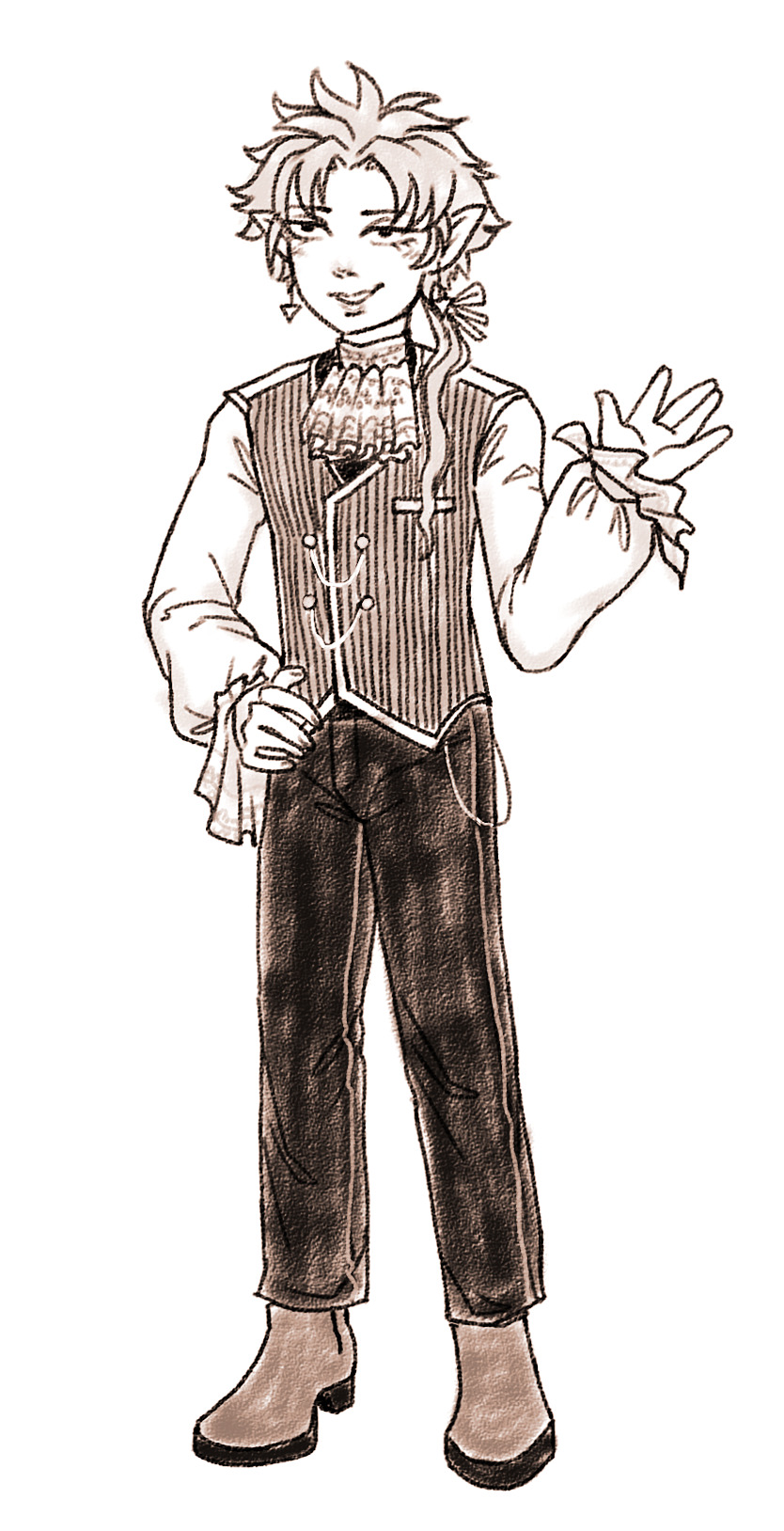
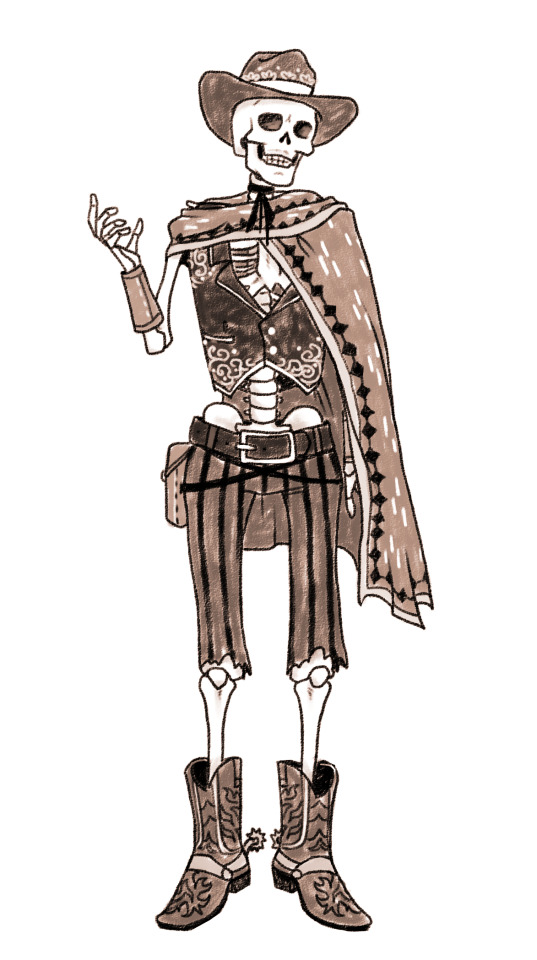
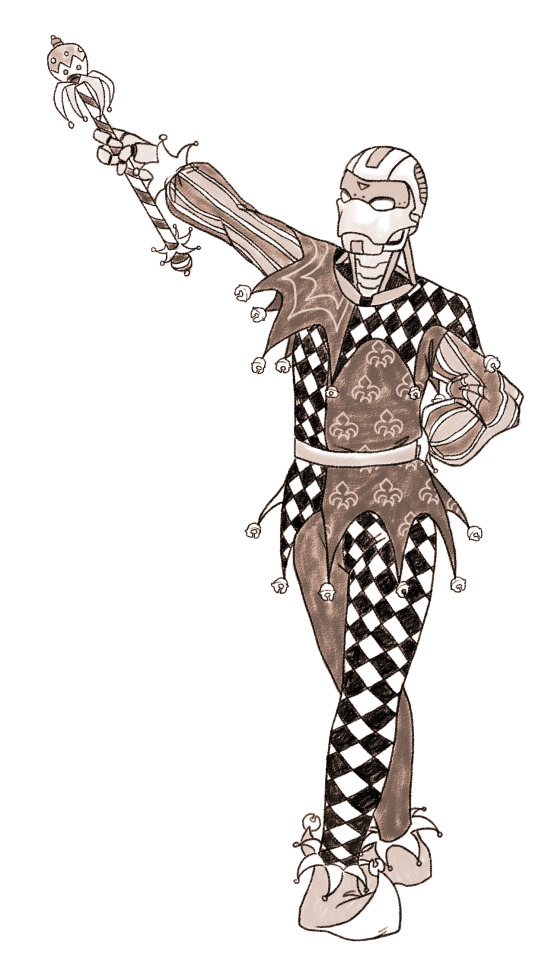

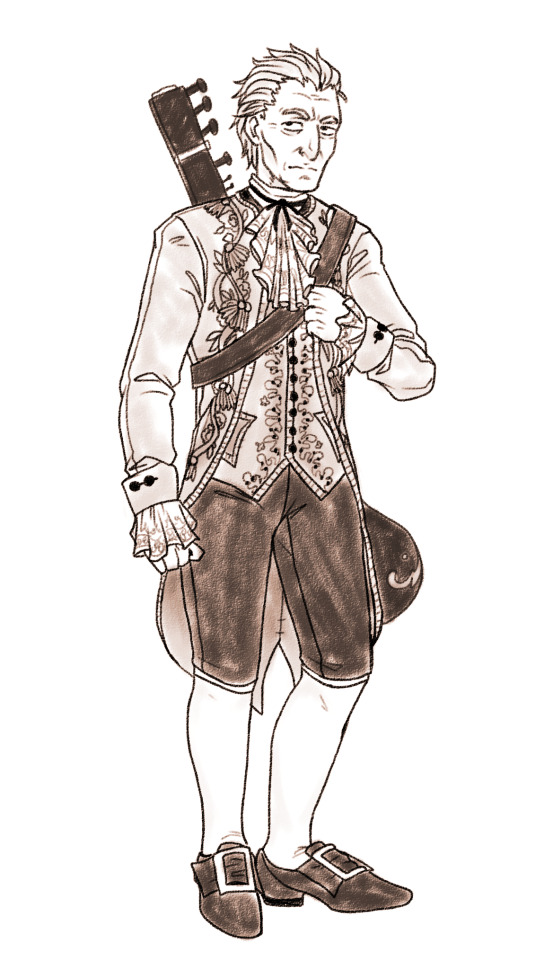
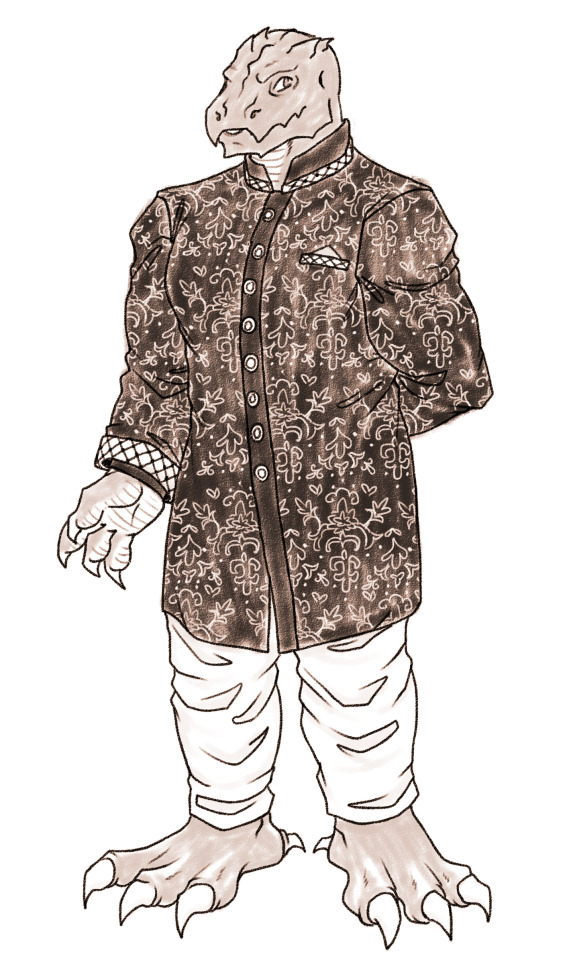
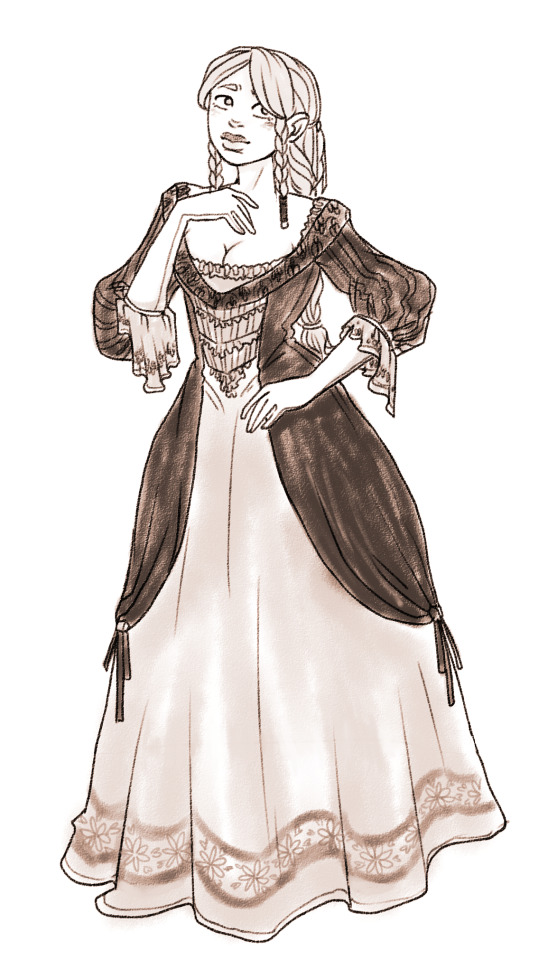
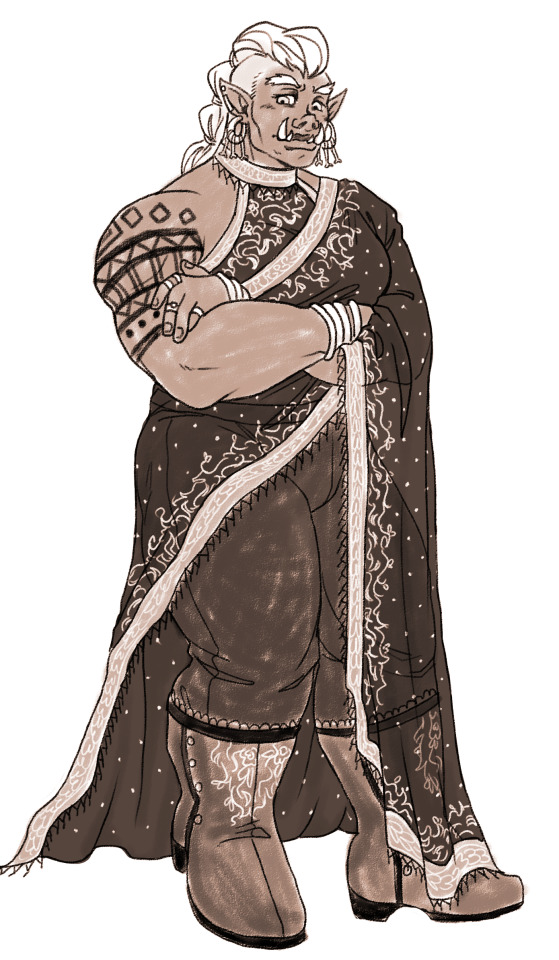
Close ups of me and my friends DND party! from this post
click for caption descriptions!
6 notes
·
View notes
Text
Women in the Canterbury Tales
I am so confused.
So, the made up people Chaucer has telling these tales on their way to and from Canterbury mostly include women of these sorts in their tales:
The Perfect Woman: only has sex when she needs to, is a dutiful/obedient wife, suffers at the hands of fate. Optional addition: she is wise and advises her husband in virtue (see the Tale of Melibee, in which Chaucer inserts himself as a character to tell a story of his own). AKA the Noble Woman.
The Evil/Wicked Woman: often the mother of an important male character, she is without fail a "heathen" and plots against the perfect woman and righteous male characters.
The Mad (Wode/Wood) Woman: she acts outside of the realm of womanhood, e.g. Cenobia in the Monk's Tale who is a mighty warrior and hunter; she is quick to anger and do violence or harangue other characters. She is not wise or temperate, but wrathful, outspoken, and fearful to behold.
The Sinful Woman: the most common sort. She is lascivious, often sexually unfaithful, often treacherous or dangerous. She leads men to their downfalls.
What has me confused is Chaucer's self-insert. Prudence, wife of Melibee, dominates the story with (frankly) seemingly endless and boring lectures on how Melibee should comport himself in relation to his three enemies who, at the beginning of the tale, broke into his house and beat Prudence and nearly slew their daughter. Prudence strikes me in so many ways as being unnatural (e.g. she doesn't seem to cry/weep/mourn at all for her daughter's fate, instead giving herself over directly to lecturing Melibee on not grieving over much) and/or wode/mad (she goes against the "nature" of womanhood to lecture her husband rather than meekly submitting herself to his will), and because of all this I kept expecting Chaucer to give her the Evil Woman treatment: she counseled Melibee against war with his enemies, not because peace is more profitable to him than war, but because she had betrayed him for them and was planning to let them kill him. AND YET THE TURN NEVER HAPPENED. Wode as she might be, Prudence is temperate and logical and skilled at convincing others (+5 Charisma modifier) to the very end--in other words, she is just as she appears, and the dread I felt reading "Melibee's Tale" (really, is it Melibee's?) was unfounded.
Assuming that I am meant to recognize this odd dissonance in Chaucer's insert (rather than this being simply an expected variation on Perfect Woman), what does it mean? This has been chewing at me. What place in Chaucer's imagined world is there for intelligent, benevolent women? Is Prudence another Type, or an anomaly? The Host, on the end of the tale, certainly seemed to find her odd, and exclaimed that it were best that his own wife not hear this tale! And yet the Host did not stop Chaucer from telling Melibee's Tale with its odd woman, but he DID stop Chaucer from telling about Sir Topas' quest to find an elvish queen to take to wife (for no mortal woman was good enough for his chaste self).
Is this oddness--Host permitting Melibee but not Topas' Tale--simply a matter of Christianity? Would Topas' fairy tale be seen as literally guiding men into heathen-ness and sin by encouraging them to seek out elf women? Is there actually a meta message here about womens' natures?
I'd been thinking that every tale but insert-Chaucer's had no exceedingly wise women, and that he was therefor making a statement about how *his* women were of a higher estate than the "lowly" characters' women--but of course, they are all author-Chaucer's women.
I am still puzzling. I have yet to break out Google Scholar to see what scholars have to say on the subject--I'd prefer to finish reading the source material first.
2 notes
·
View notes
Photo

LARPity LARP LARP time! #larping #larp #elf #makeup #aalutansnexus (at The Grene Wode)
1 note
·
View note
Text
Cultures of Everhaven
The Dwarfholds
The dwarfholds are spread all over Everhaven, reflecting the scattering of the dwarves after the death of Bhazad Khrar thousands of years ago. The dwarves have fought hard for their homes ever since they escaped slavery under the giants, and their access to metals and minerals both precious and mundane have made them quite wealthy.
Dwarves are solid and enduring like the mountains they love, weathering the passage of centuries with stoic endurance and little change. They respect the traditions of their clans, tracing their ancestry back to the founding of their most ancient strongholds in the youth of the world, and don’t abandon those traditions lightly. Part of those traditions is devotion to the gods of the dwarves, who uphold the dwarven ideals of industrious labor, skill in battle, and devotion to the forge.
Individual dwarves are determined and loyal, true to their word and decisive in action, sometimes to the point of stubbornness. Many dwarves have a strong sense of justice, and they are slow to forget wrongs they have suffered. A wrong done to one dwarf is a wrong done to the dwarf’s entire clan, so what begins as one dwarf’s hunt for vengeance can become a full-blown clan feud.
As part of the education every dwarf goes through, by the time a dwarf reaches 50 years old he or she has trained with battleaxes and war hammers, has learned a trade associated with his or her family, and has learned about various styles of stoneworking from history.
Dwarves tend to frown upon barbarians, as they have a stereotype in their legends of barbarians being criminals and dangerous threats.
The gray dwarves of Clans Balderk, Dankil, Gorunn, Loderr, and Strakeln live in the Underdark. After delving deeper than any other mountain dwarves, they were enslaved by mind flayers for eons. Although they eventually won their freedom, these grim, ashen-skinned dwarves are now isolationist and paranoid of being conquered again by the mind flayers, causing them to reject emotion and magic. They value toil above all else, and their goods are purely utilitarian.
The hill dwarves of Clans Battlehammer (Bolgurim), Fireforge (Hulgran), Holderhek (Khingron), Lutgehr (Keg Darom), and Torunn (Thagheim) have keen senses, deep intuition, and remarkable resilience. Dwelling in the hills, they are known for their piety, tendency for introspection, and a stronger connection to nature than other dwarves espouse. Many humans and halflings take up residence in the upper portions of the hold, which are the only parts open to outsiders; tribes of human barbarians and dragonborn clans also regularly stop in the upper hold to trade.
The dragonmarked dwarves of Clan Kundarak (Bhan Todir) run the Defenders’ Guild of locksmiths and security specialists, but they also build prisons and vaults and are the foremost bankers in Everhaven thanks to the vast ore deposits their dwarfhold sits over. Unlike their cousins, these dwarves are known for their artificing and wizardry.
The mountain dwarves of Clans Brawnanvil (Durn Darom), Frostbeard (Varn Boram), Ironfist (Kur Todur), Rumnaheim (Dal Badur), and Ungart (Dum Tharim) are strong and hardy, accustomed to a difficult life in rugged terrain. Taller and fairer-skinned than other dwarves, they are all forced to become accustomed to wearing light and medium armor. Many humans, halflings, and rock gnomes take up residence in the upper portions of the hold, which are the only parts open to outsiders; tribes of barbarians, goliath herds, and clans of copper and white dragonborn also regularly stop in the upper hold to trade.
The dwarves favor worship of Rontra, Terak, Maal, Korak, and Naryne.
The Four Cities of the High Elves
Ever since they arrived in the world during the Thousand Year War, the high elves have been regarded as the foremost practitioners of wizardry in Everhaven. They founded five cities, now reduced to four after one sank into the sea, and these are considered the centers of wizardry and artificing.
Each of the Four Cities is nominally ruled by its Princess, but by and large the democratically-elected City Council oversees day-to-day operations.
The high elves highly value education, and more specifically wizardry. Before they turn 100, a high elf knows how to fight with sword and bow, can speak three languages, and understands the basics of wizardry. Most continue this education, delving further into the study of wizardry and working it into almost every aspect of their lives.
The high elves are possessed of the standard fine elven features and unearthly grace. They stand a couple inches shorter than humans on average. They have bronze skin, copper, black, or golden hair, and eyes like pools of liquid gold, onyx, or silver. They wear their hair long as a sign of longevity and prosperity, and an elf who is exiled or named an oathbreaker has their hair cut as a sign they are not to be trusted. They favor elegant clothing in bright colors, as well as simple but lovely jewelry.
Many rock gnomes live in the Four Cities. Although they have a natural talent for wizardry, many turn to artificing, combining natural gnomish inventiveness with wizardry. This has had no small role in the advanced nature of the Four Cities, and the high elves have been forced to make concessions to them. The rock gnomes live in extensive networks of warrens under each of the Cities, known as the Incivita.
Each of the Four Cities has a clan of silver dragonborn living in a district all their own within the city. These individuals make up the majority of the city guards and the military (outside of the elite forces, which are almost all elves). The silver dragonborn are largely ignored by the elves, and their votes for the Council are almost always disregarded; the dragonborn don’t care, continuing their care of the Cities’ inhabitants.
The blue-skinned vedalken are welcomed among the high elves for their logical outlook and talent with wizardry, with far less of a grudge than they accept the rock gnomes. Although many are involved in the arcane universities in the Cities, there is a very good chance that any given priest is a vedalken.
The Four Cities favor worship of Urian, Terak, Zheenkeef, Tinel, and Aymara.
Brighcour
Sharing a name with the mountainous island it is built within, Brighcour represents something unique in Everhaven: dark elves actively seeking to make peaceful contact with the surface world. The dark elf rulers of Brighcour rejected both the Court of the Swords their kin follow and the politicking that erupted after the fall of the Dragon Empire, and it has taken years for them to be accepted in the surface world.
The Queen of Brighcour rules with a firm but fair hand. The nobility of the kingdom are old families with sorcerous bloodlines, and they take pride in their ancestry. Don’t be fooled, though: politics in Brighcour can be just as ruthless as in any other dark elf realm.
Many deep gnomes live in Brighcour and are actively welcomed. The dark elves have a distaste for wizardry, seeing sorcerers and warlocks as signs of power, and so the deep gnomes’ affinity for wizardry and artificing are highly sought-after.
A few gray dwarves live in Brighcour. They make up the majority of the guards and soldiers, although there are those who work their trades. The presence of the gray dwarves has caused a hybrid dwarven-elven style of architecture and metalworking that is found nowhere else in the world.
The aarakocra flocks, barbarian tribes, goliath herds, and clans of copper dragonborn that live on the surface of the island rarely interact with the inhabitants of Brighcour the kingdom.
Brighcour favors worship of Rontra, Morwyn, Zheenkeef, Tinel, Aymara, and Korak.
The Wodes
The wodes are ancient forests; some sages believe they were once in the Feywild. The wood of the trees are quite useful for arcane foci, but the inhabitants of the wodes generally have little interest in making a profit off of such things.
The wood elves have keen senses and intuition, and their fleet feet carry them quickly and stealthily through the forests. Known as much for their skill with blade and bow as with their connection to nature and introspection, the wood elves build within trees and could go their whole lives without touching the ground. They stand a couple inches shorter than humans on average. They have copper skin; their hair is brown, black, or occasionally golden or copper-colored; and their eyes are green, brown, or hazel pools.
The green dragonborn clans that live in the wodes often serve as envoys between the various other inhabitants of the wodes. They also patrol the forests regularly, protecting them from those that would bring harm.
The forest gnomes have a natural knack for illusion and inherent quickness and stealth. They gather in hidden communities in the forests or live under the wood elves’ cities, but they use illusions and trickery to conceal these settlements even from their elven allies. They are the primary wielders of wizardry in the wodes, and they use the special woods in the forests for their arcane foci.
The silver dragonborn clans that live in the wood elves’ cities serve as healers and warriors. They keep to themselves, even within the cities, but they are staunch allies of the wodes’ inhabitants.
Firbolgs love nothing more than a peaceful day spent among the trees of an old forest. They see forests as sacred places, representing the heart of the world and monuments to the durability of life. In their role as caretakers, firbolgs live off the land while striving to remain in balance with nature. Their methods reflect common sense and remarkable resourcefulness. During a bountiful summer, they store away excess nuts, fruit, and berries. When winter arrives, they scatter everything they can spare to ensure the animals of the wood survive until springtime. In a firbolg’s eyes, there is no greater fault than greed. The firbolgs believe that the world remains healthiest when each creature takes only what it needs. Material goods, especially precious gems and gold, have little appeal to them. What use are such things when winter lingers and food runs short? Firbolgs have a talent for druidic magic. Their cultural reverence for nature, combined with their strong and insightful minds, makes learning such magic an instinctive part of their development. Almost every firbolg learns to tap into the magic of nature, typically used to mask their presence, and many go on to master nature magic. Firbolgs who become druids serve as stronghold leaders. With every action the tribe takes, the druids weigh not only the group’s needs, but the effect each action will have on the forest and the rest of the natural world. Firbolg tribes would rather go hungry than strain the land during a famine.
The tribes of shifters that live in the wodes largely ignore politics, paying more attention to their own survival. They usually maintain casual alliances with the green dragonborn clans and firbolgs.
The Wyld
“The Wyld” is a general name for any piece of territory as yet unclaimed by a geopolitical power. That doesn’t mean they are full of monsters and devoid of civilization, however; settlements have been built in these regions, and others roam hither and yon.
Some lightfoot halflings live in nomadic bands, traveling in wagons or rafts throughout the Wyld. They’re inclined to be affable and get along well with others, though some of these bands have earned a criminal reputation as coming into town and leaving with stolen goods.
Some stout halflings live in small, peaceful family communities with large farms and well-kept groves. These families preserve their traditional ways of life. When threatened, however, the halflings will defend their homes with violence if necessary.
Red dragonborn clans stalk the Wyld, either preying on its inhabitants or defending them from monsters depending on their alliance with either Tiamat or Bahamut. They tend to keep to the foothills, however.
Gold dragonborn clans live in secluded areas and generally keep to themselves, setting out to combat evil only when something important enough catches their attention.
The shifter tribes originated from unions between lycanthropes and ordinary humans. They are as likely to prey on the other inhabitants of the Wyld as to trade with them.
Humans are as likely to live in settlements as they are to form nomadic tribes. Between Tver and Razmia, the humans are slender, tawny-skinned folk with brown hair that ranges from almost blond to almost black; most are tall and have green or brown eyes. West of the Barsard Mountains, the humans are of medium build and height, with dusky skin that tends to grow fairer the farther north they dwell; their hair and eye color varies widely, but brown hair and blue eyes are the most common.
The centaur herds have an affinity for the natural world. They celebrate life and growth, and the birth of a foal is always cause for festivities. At the same time, they revere the traditions of the past, and they keep alive the legends of ancestral heroes.
The minotaur herds are zealous and love battle. They tend to vent their outrage through violence, but they aren’t generally quick to anger. They are passionate, loving their friends and partners fiercely, and they laugh loud and long at good jokes. Minotaur legends describe a small pantheon of heroes—perhaps they were once thought of as gods—who established the minotaurs’ place in the world. Every minotaur in Everhaven claims descent from one of these heroes.
The orcs were created by Terak and Canelle to serve as the gods’ soldiers in the Thousand Year War, but now they’re abandoned to their own devices. Those living in the Wyld survive through savagery and force of numbers. Theirs is a life that has no place for weakness, and every warrior must be strong enough to take what is needed by force. Orcs aren’t interested in treaties, trade negotiations or diplomacy. They care only for satisfying their insatiable desire for battle, to smash their foes and appease their gods.
The Kingdom of Logres
Logres sits in the northwest. The climate is warm and temperate enough to grow grapes in the southern portion of the kingdom. The presence of the Fernian Wode on the kingdom’s western border has given the realm a reputation for magic and mystery, as well as making fire magic the most popular among evokers in Logres.
Its humans are tall, fair-skinned folk with blue or steely gray eyes. Most have raven-black hair. They dress in clothes similar to the eladrin, for they believe they are superior to men.
Halflings are the largest minority in Logres, as their hard work and loyal outlook offer them abundant rewards. Lightfoot halflings tend to keep to the cities, while stout halflings live in outlying rural villages.
Silver dragonborn clans live in districts within the major cities in Logres. They often care for the peasants and join the city guard or the army.
Bronze dragonborn clans live in villages on the coasts, normally near human or halfling settlements. They may join the army, but they also operate lighthouses and a sort of coast guard or become sailors.
Kenku live in flocks within the cities. They most often operate as messengers, spies, and lookouts for criminals, but some serve as scouts for the army.
With the presence of the Fernian Wode, half-wood elves are not uncommon on the western edge of the kingdom.
Logrians largely follow the Great Church. Their nobles are steeped in the traditions of chivalry, but sorcerers are considered wild and tainted with evil and druids as primitive savages; wizardry is the only truly accepted form of magic, though that doesn’t stop peasants from turning to any mage they can when priests can’t help.
The Kingdom of Oriellon
Oriellon sits on the western edge of Everhaven. The climate is warm and temperate all year round. It is a land of rolling plains once covered by the Fernian Wode. The culture is strictly feudal, and most people aspire to follow the Code of Chivalry, which espouses faith in the Lords of Good, justice, loyalty, defense of the weak, courage, truth, generosity, chastity, humility, and perseverance. Investigators are commissioned by the king to travel the land and ensure the king’s justice is carried out throughout the kingdom, using their intelligence and wisdom to pass judgment and songs to ensure the laws are remembered by the peasants. Oriellon is also the home of the late Good King Omund, who was instrumental in the formation of the Golden League.
Its humans are of moderate height and build, with skin hues ranging from tawny to fair. Their hair is usually brown or black, and their eye color varies widely, though brown is most common. Humans are the dominant species in Oriellon, and they rule.
Silver dragonborn hold a special place in Oriellon, for they formed Good King Omund’s legendary Dragon Knights or Dragon Phalanx. They are honored and treated very well by everyone they meet, hailed as heroes.
Halflings are the largest minority in Oriellon. Lightfoot halflings typically live in the cities, while stout halflings typically live in rural villages.
Kenku live in flocks within the cities. They most often operate as messengers, spies, and lookouts for criminals, but some serve as scouts for the army.
The Great Church is the most prominent religious organization in Oriellon.
The Kingdom of Falion
Falion sits in the northwest of Everhaven. The climate is warm and temperate year-round. The kingdom was founded by a tribal chieftain who made a pact with seven archfey, and every monarch since has continued this practice; many nobles have made similar pacts with archfey, while others are the result of unions between fey and humans that resulted in wild sorcerous bloodlines.
Its humans are of moderate height and build, with skin hues ranging from tawny to fair. Their hair is usually brown or black, and their eye color varies widely, though brown is most common. Humans are the dominant species in Falion.
Halflings are the largest minority in Falion. Lightfoot halflings tend to live in the cities, while stout halflings tend to live in rural villages.
Silver dragonborn clans live in districts within the major cities in Logres. They often care for the peasants and join the city guard or the army.
Bronze dragonborn clans live in villages on the coasts, normally near human or halfling settlements. They may join the army, but they also operate lighthouses and a sort of coast guard or become sailors.
Kenku live in flocks within the cities. They most often operate as messengers, spies, and lookouts for criminals, but some serve as scouts for the army.
The Great Church is the primary religious organization in Falion.
The Grand Duchy of Mairo
Three centuries and one day after the now-defunct Host of Spears razed the original Fort Mairo to the ground, Castle Mairo was raised in its place. For many years, Mairo was part of Falion, but within the past hundred years they have become an independent realm ruled by a duke. All of the inhabitants are free citizens, and knighthood is not restricted to the nobility.
The symbol of Mairo is a battered breastplate, representing the breastplate of Herridek I, who founded the duchy.
The current duke is Herridek II, who is a beneficent monarch.
The demographics of Mairo are essentially the same as the demographics of Falion.
The Kingdom of Vinion
Caught in a seeming war between forest and grassland, Vinion is a hardy land that birthed a hardy and adventurous people. They are slender, tawny-skinned folk with brown hair that ranges from almost blond to almost black; most are tall and have green or brown eyes, but these traits are hardly universal. They dress flamboyantly and value quickness of reflex and of wit, as well as reading and writing. For the Vinian, however, philosophy is useless. Morality, ethics, logic, theology, all exist in the poem, song, and above all, the stage.
The men of Vinion are amongst the most multi-talented in the world, considering it each man's responsibility to master writing, reading, oratory, music, cooking, dancing, duelling, sailing. Lofty goals, and only a few men achieve the ideal. But all Vinians aspire to it.
Sturm, the Greatest City of This or Any Age
Vinion is also home to Sturm, the City of the Great Game. The largest city in the world, Vinion is divided into five distinct districts. Each district has its own Lord, its own army, its own laws. There is trade, commerce, citizens with their papers in good standing can usually expect to move freely between the districts. But anyone caught and accused of being a Spy for a rival Lord can expect to be quickly tried without jury and hung without witnesses. You can buy anything in Sturm, but information is the most valuable product.
The Guilds
In Vinion, the nobility wars against the newly powerful guilds. Each man is expected to join a guild. Those who remain unaligned are suspicious. "Cousin" is now open code for "fellow guildsman.”
There are numerous guilds, perhaps even too many to list here.
The Empire of Tver
Tver is best known as the home of the War Breed, the orcs and half-orcs. After the Thousand Year War, the humans in what would become Tver welcomed the orcs with open arms, harnessing and focusing their martial nature. Ever since, Tver has been ruled by a half-orc, and the army of orcs and humans has been expanding the borders. This is hampered, however, by strange inheritance practices.
The humans of Tver are generally tall, slim, and amber-skinned, with eyes of hazel or brown. Their hair ranges from black to dark brown.
Half-orcs are incredibly common in Tver, but they are also welcomed: they are even seen as an ideal form, a union of the best parts of humans and orcs.
Orcs are most often members of the army, whether as dire wolf-riding cavalry or staunch infantry.
Razmia
Razmia was founded by halflings who fled to coastal lagoons after the collapse of the Caelian Empire. Humans later joined them, and bronze dragonborn clans moved up to join them. Their sailors are the great explorers of the world, bringing trade and culture to all the regions of Everhaven.
Its humans are slender, tawny-skinned folk with brown hair that ranges from almost blond to almost black; most are tall and have green or brown eyes.
Halflings are the largest minority in Razmia. Lightfoot halflings tend to live in the cities, while stout halflings live in rural villages.
Bronze dragonborn live on the coasts and fight pirates and sahuagin. They also operate lighthouses and serve as sailors.
Kenku live in the cities, often working as messengers, lookouts, and spies for criminals. Some, however, work as scribes or as scouts for the army.
Occasionally, sea elves and tritons come to Razmia to trade.
The Great Church is the primary religion in Razmia.
Valumar
Valumar is hailed as the center of divine magic in Everhaven. The headquarters of the Great Church is here, and arcane magic is heavily restricted to the point that it might as well be forbidden. Almost all of the inhabitants are humans.
The humans of Valumar are of two physical appearances, generally. Some are generally tall, slim, and amber-skinned, with eyes of hazel or brown. Their hair ranges from black to dark brown. Others tend to be short, stout, and muscular; they usually have dusky skin, dark eyes, and thick black hair.
Shelan and the Red Wilds
South of Razmia, across the Inner Sea, is a vast desert. In a small region, directly opposite Razmia, is the magically preserved oasis realm of Shelan, said to be ruled by gods on earth. The rest of the land is plagued by undead from even further south, and the people who live out there struggle every day to survive.
Humans have three general appearances. Some, generally west of the Astawa Mountains, are shorter and slighter in build than most other humans and have dusky brown skin, hair, and eyes. Others, particularly south of Valumar, are generally tall, slim, and amber-skinned, with eyes of hazel or brown; their hair ranges from black to dark brown, but it is generally shaved off. The last are generally tall and muscular, with dark mahogany skin, curly black hair, and dark eyes.
Blue dragonborn clans live in Shelan and are often guards or administrators. They also make up much of the army.
Brass dragonborn clans live in the Red Wilds and wander it, aiding travelers and fighting undead as they come across them.
Aarakocra live in Shelan and in the Red Wilds. In Shelan, they are often priests and scouts, while in the Red Wilds they live in distant tribes that rarely touch the ground.
Khenra live in both Shelan and the Red Wilds. In Shelan, they are often warriors, while in the Red Wilds they struggle for whatever they can.
Yuan-ti purebloods live in Shelan. They are believed to be the chosen of one of the gods, and they study wizardry there…though there are rumors of communion with darker powers.
Minotaurs are zealous and love battle. They tend to vent their outrage through violence, but they aren’t generally quick to anger. They are passionate, loving their friends and partners fiercely, and they laugh loud and long at good jokes. Minotaur legends describe a small pantheon of heroes—perhaps they were once thought of as gods—who established the minotaurs’ place in the world. Every minotaur in Everhaven claims descent from one of these heroes.
1 note
·
View note
Text
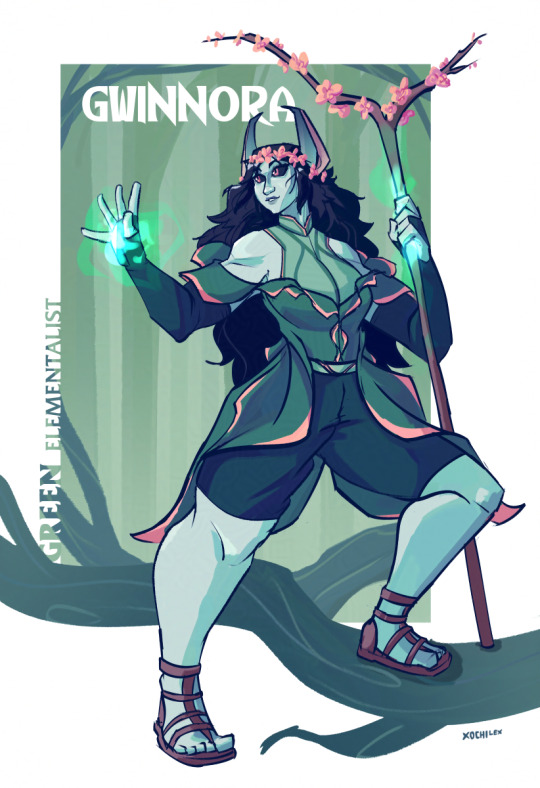
Finally finished this piece of Gwinnora, a wode elf NPC in the Draw Steel game I'm running!
#gwinnora#elf#wode elf#wood elf#draw steel#elementalist#mage#druid#ttrpg#ttrpg character#ttrpg art#MCDM#MCDM rpg#oc#xochiart
89 notes
·
View notes
Text

Quick sketch of a wode elf elementalist
#draw steel#mcdm#mcdm rpg#Elf#Wode elf#Wood elf#ttrpg#ttrpg character#elementalist#Wizard#Druid#Oc#Sketch#Wip
102 notes
·
View notes
Text

My friends Draw Steel character, Tahlwyn! 💚✨
#jacqjohnsonart#my art#art#illustration#digital art#drawing#sketch#original character#mcdm#draw steel#draw steel ttrpg#revenant#wode elf#elf#dark elf#shadow#rogue
20 notes
·
View notes
Text
I remembered to record this one! Watch me redraw things multiple times lol
#elf#wode elf#wood elf#draw steel#ttrpg#druid#mage#mcdm#mcdm rpg#timelapse#art timelapse#oc#gwinnora
25 notes
·
View notes
Text
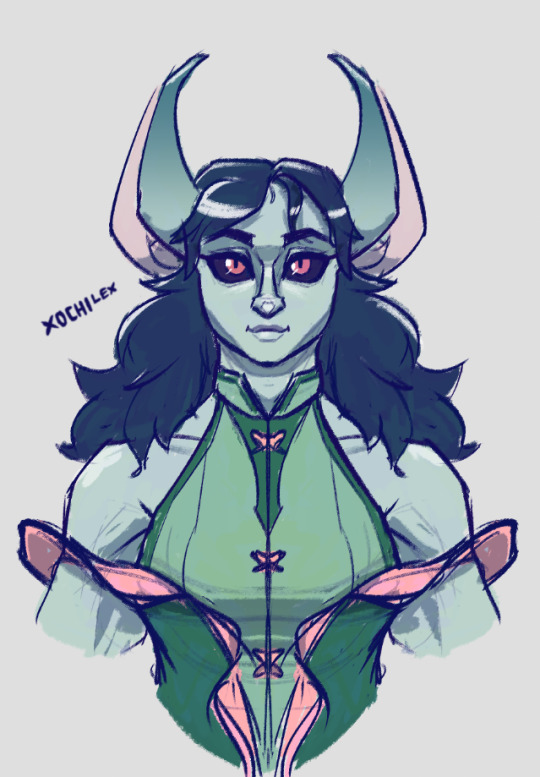
Landed on a look I like for a wode elf
#draw steel#wode elf#elf#elementalist#wood elf#mcdm rpg#mcdm#druid#wizard#ttrpg#ttrpg character#oc#original art#original character#xochiart
40 notes
·
View notes
